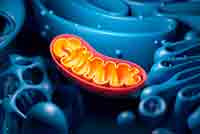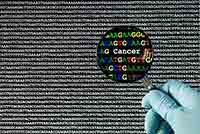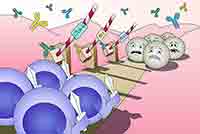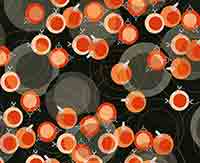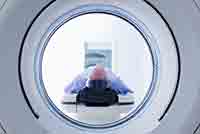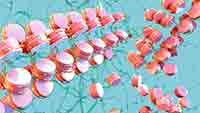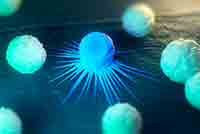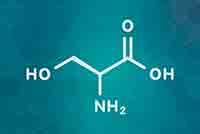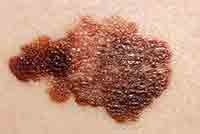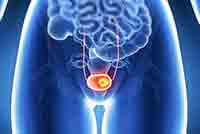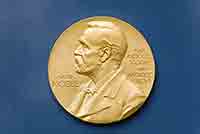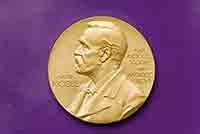-
Milestone 1 2001
Routes to resistance
-
Milestone 2 2004
Tracking cancer in liquid biopsies
-
Milestone 3 2004
When cancer prevention went viral
-
Milestone 4 2005
A licence to kill
-
Milestone 5 2005
Sitting on the fence
-
Milestone 6 2006
Not a simple switch
-
Animation
Targeting Cancer Cell Metabolism
Cancer cells are hungry. To feed their rapid growth and division, their metabolism changes. Moreover, they use sugar (glucose) in a different way to normal cells. This animation, created by Nature Reviews Drug Discovery, explores the key aspects of the altered metabolism in cancer cells and explains how these can be exploited for the development of new anticancer strategies.
Please visit YouTube to view this video.
-
Animation
Decoding Cancer Immunology: Hunting Hidden Tumours
The immune system is constantly on the lookout for threats, but cancer isn’t always easy to spot. Some cancer cells can fly under the radar. Now, advanced sequencing technologies are enabling scientists to investigate the unique genetics of both cancers and immune responses in individual patients. This means researchers can develop treatments that boost the immune system and help the body win its battle against cancer.
Please visit YouTube to view this video.
-
Milestone 7 2008
Sequencing the secrets of the cancer genome
-
Webinar
On demand: Genomic Medicine in Cancer webinar
-
Milestone 8 2010
Unleashing the immune system against cancer
-
Animation
Immunology Wars: Monoclonal antibodies
Our immune systems are at war with cancer. This animation reveals how monoclonal antibodies can act as valuable reinforcements to shore up our defences – and help battle cancer.
Please visit YouTube to view this video.
-
Milestone 9 2010
Engineering armed T cells for the fight
-
Animaton
Tumor Immunology and Immunotherapy
This animation created by Nature Reviews Cancer and Nature Reviews Immunology illustrates how tumour cells are sensed and destroyed by cells of the immune system and how tumours can evolve to evade immune-mediated elimination. Scientists are developing new immunotherapies that help the immune system to ‘fight back’—the animation explains how these exciting new drugs work.
Please visit YouTube to view this video.
-
2011
Results of national lung cancer screening trial
-
Milestone 10 2012
Oncohistones: epigenetic drivers of cancer
-
Milestone 11 2012
Tumour evolution: from linear paths to branched trees
-
Webinar
On demand: Cancer genomics & single cell technologies
-
Milestone 12 2013
Undruggable? Inconceivable
-
Milestone 13 2013
Good bacteria make for good cancer therapy
-
Video
How to tackle global inequities in cancer
Cancer can affect everybody, but not equally. Certain people, whether because of their gender, race, education or socio-economic status see worse outcomes from cancer. Access to cancer screening can differ, as well as the quality of patients’ lives after treatment. Our knowledge of biological aspects is also increasing. Professor Sulma Mohammed’s research looks at ways to understand and tackle these cancer health inequities, with a focus on sub-saharan Africa.
Please visit YouTube to view this video.
-
2016
FDA approval of atezolizumab for bladder cancer
-
Milestone 14 2017
The AI revolution in cancer
-
Video
Cancer, ageing, and the importance of the tumour microenvironment
Professor Ashani Weeraratna has been studying the cancer microenvironment in her lab for the past 17 years. Taking into account that the tissues in our bodies change as we age is important when researching cancer biology. She hopes that gaining a better understanding of how the growth of cancer cells is affected by their direct cellular ‘neighbourhood’, especially when we age, could be key to developing better treatments for patients with cancer.
Please visit YouTube to view this video.
Nature Milestones in Cancer
 Download all of the articles in one PDF
Download all of the articles in one PDF
